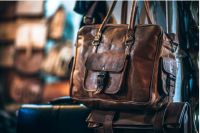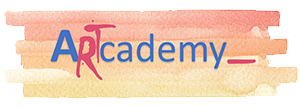

Capitonnè: how to do it?
The capitonné is an embellishment that makes the surface of the sofa, an armchair or something else, pleasantly undulating, enhancing the softness of the upholstery. Through the use of technical tools used by artisans for the production of capitonné, a series of buttons are applied equidistantly on the covering, recreating a series of “pillows” placed side by side.
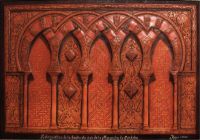
Embossed leather

Hand carding and combing sheep's wool
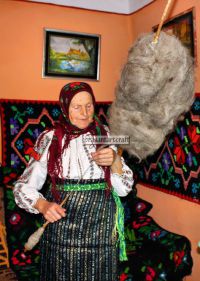
Hand spinning wool on a distaff with drop spindle
The famous Romanian traditional textiles are known to be the result of a hard work and some very special craft skills. In the Romanian villages, women were trained into traditional fiber arts (weaving, hand spinning wool, hemp, cotton, flax) from an early age. Nowadays, the few keepers of ancient customs and traditions are old rural people.
A traditional artisan master shows us the working methods of the past. First the wool must go through a series of preparatory processes, cleaning, combing, carding by hand or with a wool carding machine. Then, the wool is wrapped and tied on the distaff and it is ready to spin.

Highlander’s belt

Leather manufacturing in Florence
The video shows the work of an Italian shoemaker, during the realisation of tailored shoes. The shoes are made entirely with leather and requires different phases of work: the cut of the leather, the shape of the shoes, the finishing touch and the decoration.
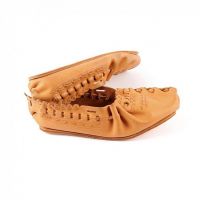
Leather shoes called "krpce"
Krpce are a typical Slovak oldest folk leather shoe. The history of origin goes back to 9-10th century.
The material used for its manufacture, is a natural leather.
Krpce can be weared by women, men and children, too. The top of these shoes is cut out with one piece of ground leather. Further garbage processing gives them the desired shape on the foot. For increased abrasion resistance, they have a padded and stitched outsole made of durable leather. From a practical point of view, it is not advisable to have a bare foot. Walking (even dancing) is more comfortable if thicker socks of sheep's wool are dressed. The whole manufacture process takes around 2 hours.
The video offers an example of the great manufacturing skills of the Slovak folk shoes, called krpce.
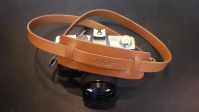
Leather work made in Belgium
The video
shows the technique used to work the leather. First of all, the leather is cut
in order to give the right shape; then it is painted; finally, the last
finishing touches are made. The video shows the creation of a leather belt.

Romanian Sheepskin Coats
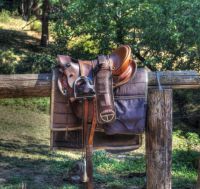
Saddle crafting technique

Saddlery and harness
The saddlery is the art of working various leather goods or saddles for horses. A garrison is a piece or arrangement of cavalry saddles, pack saddles and rigging. The saddler works handcrafted leather objects, masters in the art of transforming a piece of leather without any form except that of the animal.
To this artisan work it is necessary to have specialized tools such as the softwood board for cutting work, measuring tape , hammer to tap the leather and rivet the hardware, knives for cutting, 'chaira' or sharpener tool for sharpening the cutters, etc., as well as templates, tweezers, scissors, punches, ruler, compass, wooden scratcher, letter figures and numbers markers, and riveters,
Other materials are often used in addition to leather, such as canvas, fat wool called yarn with which garrisons are made or drawings on mounts or colored clothes and threads.
The word 'talabartería' means saddlery, having its origin in the term talabarte, "belt with shots to carry the sword or sabre”.
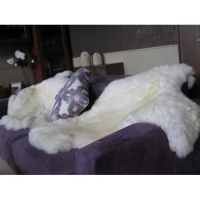
Sheep fur carpet manufacturing
Currently wool products such as carpets are very popular in Slovakia. There are some types of them, for example "alpaka" which is 5 times warmer as an original fleece. Another type is "moher".
The most important phase of processing is soaking as without it, the pelt is brittle. The second step is degreasing pelt from fatty tissues. The third, the most sensitive step in this process is scouring, where the pelts are immersed in a special solution to preserve the wool. Fourth step is pickling, the pelt is soaked and salted again. At the end stretching and drying are used, where the pelts are under the tension with clips and it is necessary to do it outside. The last step is customization according to the customer's needs. The fleece of the sheepskin has an excellent insulating property and it is resistant to flame and static electricity. His exploitation is versatile. In Slovakia we also have sheepskin coats called "kudmen" with a handmade folk embroidered theme on it, sheepskin-lined boots, hats and many other useful products.
The presented item in this video is 100% sheepskin carpet. This video offers an example of the great skill of sheepskin processing in Slovakia.
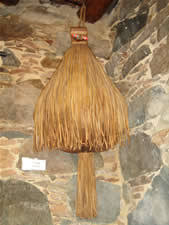
Sheep Skin bag
The skin from the goats and sheeps was used to make heavy duty bags for everyday use. The bags were used mainly from the sheperts and were decorated.
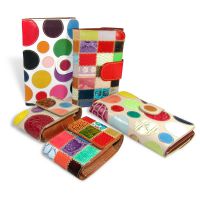
Skin of Ubrique
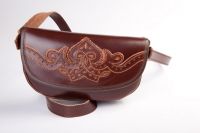
Smell of leather
José Manuel Domínguez, from Valverde del Camino (Huelva), grew up surrounded by the smell of leather and the sounds of buckles. He is a leather artisan and a saddler.
His hometown has a tradition for these trades, which have been developed by his family for generations in their workshop, Artesanía Berrocal.
He is the third generation and was awarded with the Master Artisan Card by the Andalusian Government.
José Manuel claims that leather speaks and tells him how to work with it. Now, he is teaching how to interpret that language to his nephew, who is in charge of preserving the family tradition.

The costume of Gille de Binche
The video
shows the creation of the carnival costume of Gille, very popular character of
the carnival of Binche. The costume is made with linen and it is composed of a
blouse and pants. It is decorated with the emblems and the colours of Belgian
flag. The most important part of the costume is the hat, made entirely with big
feathers, put together one by one by artisans.
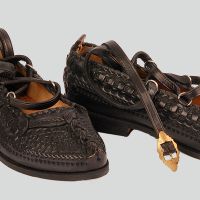
Traditional highlander's moccasins - KIERPCE
Traditional highlander's shoes called “kierpce” made of leather. These shoes have been made of genuine, hard leather since the early Middle Ages, thanks to which they are durable. The Podhale highlanders used leather from the cattle to make these moccasins.
Kierpce were commonly used until the 20th of in the Carpathians and the Balkans.
